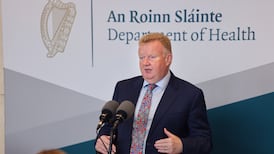Nursing home places may need to be doubled to meet the demands of an ageing population over the next 20 years, a report commissioned by the Department of Health has warned.
It said the existing Fair Deal nursing scheme, which funds the care of more than 20,000 older people, was unsustainable in the long term and prices must be changed.
Some 24,000 more places in nursing homes may be needed by 2036 – equivalent to an extra 250 new nursing homes.
The report, led by DKM economic consultants, said major cities were particularly badly served, and the problem would get worse unless the building of new homes was accelerated.
Public nursing homes, many housed in older, poorly fitted buildings, are increasingly finding it difficult to pass Health Information and Quality Authority (Hiqa) inspections.
The report said the situation was “coming to a head” as Hiqa was beginning to impose “no new admissions” rules on some homes, preventing them from taking new patients.
Cash shortfall
Public nursing homes are much more costly to operate than private ones, partly because of greater staff costs, but also because of the levels of needs of patients.
Private nursing homes are paid €1,000 a week by Fair Deal for each patient. The report said the scheme had brought advances but its pricing system lacked consistency.
The Fair Deal payments were the single biggest barrier to investment in the sector, it warned, because they did not reflect costs or the degree of dependency of residents.
It noted there was no appetite for a property-based tax scheme to promote development of homes, such as those that existed in the past.
At present there are 29,600 residential care beds, 76 per cent of them provided by private operators.
The report assumes the need for an additional 700 beds a year in 2016 and 2017, and 400 a year thereafter.
Assuming 4.5 per cent of over-65s need long-term care, a gap of 24,000 beds would open up by 2036.
GP tax breaks
If only 4 per cent of over-65s need care, the projected gap falls to 18,000.
Other barriers to new investment identified in the report are a shortage of qualified staff, a lack of available sites, alleged inconsistency in the application of standards by Hiqa and fragmentation in the sector.
Meanwhile, tax breaks should be offered to GPs to encourage them to invest in primary care centres or specialised equipment, another consultants’ report for the Department of Health has urged.
However, the document, compiled by consultants Indecon, said there should be no tax incentives for non-GP investors in primary care centres.
It also said primary care services should be expanded: “We believe there will be resultant benefits in terms of lower costs of healthcare and improved health outcomes if there is an effective expansion of primary care provision.”
The Indecon report recommended “a multifaceted approach involving HSE-leased or built centres, GP-led primary care centres and incentives for GPs to invest in equipment”.
It said there was a rationale, subject to State aid approval, for properly targeted tax incentives for GPs to develop primary care centres or to invest in primary care specialised equipment.
Accepting that costly and inappropriate tax breaks had been given in the past, the report, nevertheless, said targeted breaks now are “soundly based and could significantly reduce exchequer costs and enhance health outcomes”.










